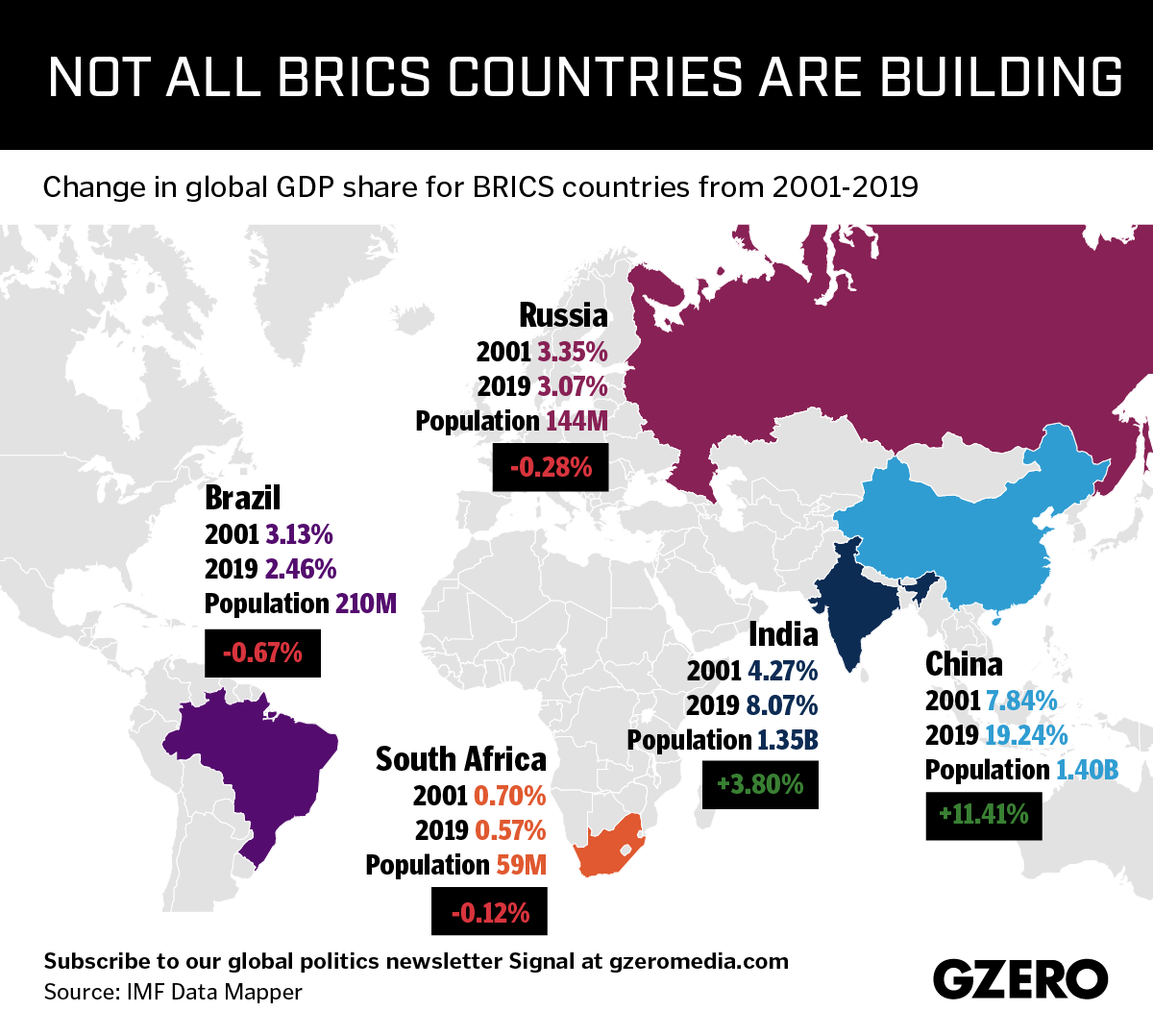The BRICS – a bloc of nations comprising Brazil, Russia, India, China and South Africa – meets today in Brazil's capital for its annual summit. The idea of the "BRIC" grouping comes from a 2001 Goldman Sachs paper, which predicted that these rising economies, despite their major differences, would soon be among the world's largest, and that as a group they would command more global clout as a result. The idea took on a real-world structure in 2009, when Brazil, Russia, India and China began holding regular BRIC summits, and in 2010 they invited South Africa to join as well. But this vision of BRICS power hasn't necessarily materialized: China's share of global GDP has boomed – and India's growth has been significant, too. But the B, R, and S shares of the global economy have actually shrunk over the past 20 years. Here's a look at how these economies have fared since the idea of the BRICS was born.
More For You
At the start of the 21st century, Destiny’s Child was atop the US charts, “Google” was a little known search website with a weird name, and two things happened that would shape the world we live in today.
Most Popular
Think you know what's going on around the world? Here's your chance to prove it.
Sports inspire greatness, determination, and resilience — both on and off the field. Bank of America is proud to celebrate the achievements of and uplift communities through the power of sports. Learn more about how Bank of America supports athletes in life and in the game.
